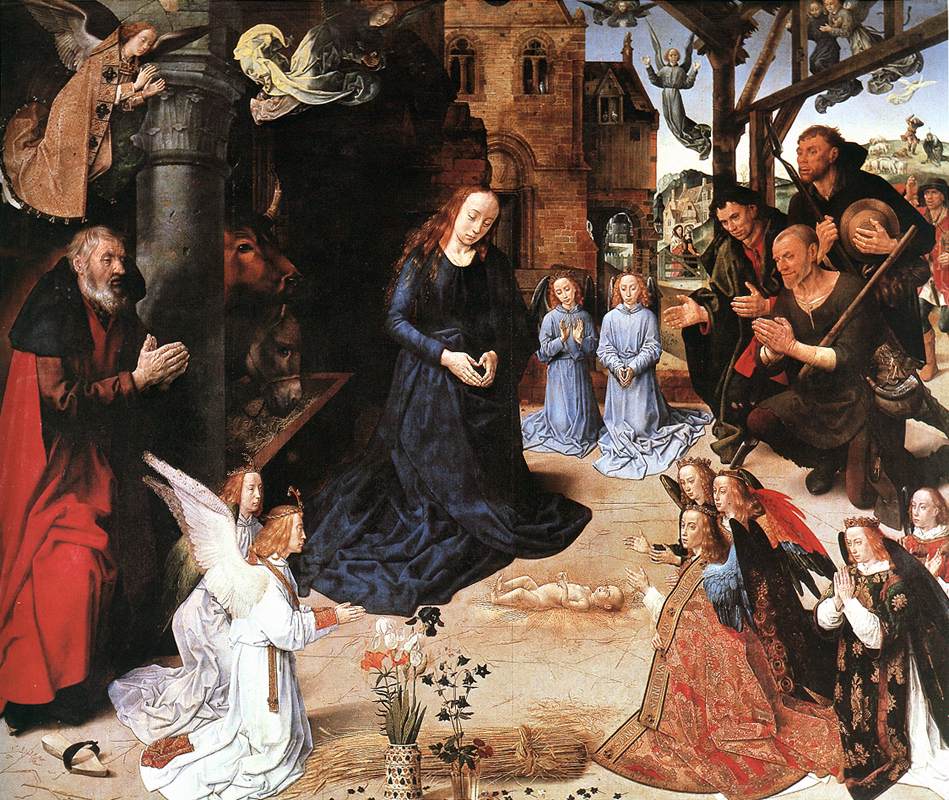The Adoration of the Shepherds Hugo van der Goes (b. cca. 1440, Ghent, d. 1482, Bruxelles) 1476-79


Description from Web Gallery of Art
Oil on wood, 253 x 304 cm
Galleria degli Uffizi, Florence
The picture shows the central panel of the Portinari Triptych.
The Adoration of the Shepherds, the most important work by the greatest Netherlandish painter of the late 15th century, has a unique historical and artistic significance. The altar was donated to the Florentine church of San Egidio by Tommaso Portinari, who since 1465 had been living in princely style in Bruges as manager of the Medici family's commercial interests. The central panel is flanked by two wings depicting other members of the Portinari family and the family's patron saints, with a grisaille Annunciation on their reverse.
From an artistic point of view, the differences between this work and those of the preceding generation, and indeed earlier paintings by the same master, are astounding. While space and anatomy are easily mastered, they are no longer major themes of the composition, The infant Jesus lies within an aureole in an outdoor square, surrounded by his parents, clusters of angels and the worshipping shepherds. The more or less circular arrangement of the figures can be perceived equally in three-dimensional and two-dimensional terms. While the figures may have lost volume in comparison to the Monforte Altar, their faces and gestures have gained in expressiveness. A certain impression of spatial depth is suggested by the figures' varying distances from the front of the picture and by the oblique line running from the Antique-style column beside Joseph in the left-hand foreground, through the manger with the ox and ass, and on through the buildings in the middle ground. Its logic is overthrown, however, as the artist reverts to the medieval system in which figures are portrayed on a scale directly related to their importance. Thus the angels in the foreground are surprisingly small in comparison to Mary and Joseph - a contrast repeated in the sizes of the donors and saints portrayed in the wings.
Details such as the angels in their copes and the still-life of flowers in the foreground are executed with an exquisite delicacy unsurpassed in the entire painting of the Early Renaissance.
The influence of the Portinari Altar, which was erected in Florence in 1478, was felt by many of the Florentine painters and is reflected in particular in the works of Ghirlandaio and Leonardo.